Like the fictitious Ann Marie portrayed by Marlo Thomas, I was fresh from the sticks, but instead of Manhattan, I headed for Hollywood. I wanted to write like Dostoesvsky; instead, by an odd set of circumstances, I found out I was funny.
I grew up in West Texas, where politics as well as football is in the blood. It was political season in California, and I was volunteering -- to meet young single attorneys. I also had a guy pal, Garry Marshall, a gag writer from New York, who had just been brought to Los Angeles to write for The Joey Bishop Show. Garry didn't know how to drive, and since this was Los Angeles, and I did, we spent a lot of time together.
Bishop was part of "The Hollywood Rat Pack," led by Frank Sinatra, and including Dean Martin, Sammy Davis, Jr. and Peter Lawford. There was a connection to the Kennedys through Peter Lawford, and Garry was given word that he was to write jokes for Robert Kennedy. Clueless in this department, he turned to me as the only person who actually knew which political party was which.
After a crash course, Garry announced that he had discovered that, against all signs, I could actually not be serious. He introduced me to another aspiring young writer, just out of Berkeley, Ed Scharlach. "All comedy writers have two heads," Garry pointed out.
The timing couldn't have been better. There had been shows on television about single women before. I grew up with Private Secretary, with Ann Southern, and Our Miss Brooks, with Eve Arden. They were smart and sassy, but I didn't really identify with them -- they were of my mother's generation. There was also Hazel, with Shirley Booth, but no one I knew back in El Paso had a maid who spoke English.
That Girl was a pioneering concept. Bill Persky and Sam Denoff were the creators and shepherds, but Marlo shaped the direction, determined to create a role that was not a conventional girlfriend or wife -- a leading role, not a second fiddle and straight-woman. This led to her creative team to get the brilliant idea of actually trying to find a young, single girl writer somewhere. Comedy was a male fortress and females were a rarity. Selma Diamond, who wrote for Sid Caesar and was the inspiration for Sally on The Dick Van Dyke Show, seemed to be the model, and she was of my grandmother's generation.
Bill and Sam figured that I would be able to write Ann Marie's lines realistically and my partner, Ed, would handle those of Donald Hollinger, her boyfriend, played by Ted Bessell. But I was just as likely to take on Donald's practical viewpoint and Ed totally got Ann Marie's slightly off-center viewpoint (Ed was always funnier than I). Our scripts came out of our own lives -- as well as old movies and our favorite comic books. Looking back, I find it hard to believe that a character in their early 20s could seem so alien to the production team, who were mostly just out of their 20s themselves. But it was pre-Beatles, pre-Hair, and it seemed that once you reached 21, it was lock-step into the world of grown-ups.
Thank you again, Marlo, because with That Girl, Ed and I didn't have to become instant grown-ups, even though we were receiving grown-up paychecks. We were living out our fantasies and yours: so what if no struggling working girl could afford the wardrobe of Ann Marie; so what if she couldn't have afforded that gorgeous apartment in reality? Ed and I thought we were writing sparkling adult banter, along the lines of those early "screwball comedies" with Carole Lombard that we watched at 2 a.m. You knew your main fans were adolescent girls. You showed young girls that they could have no boundaries before you created Free To Be You and Me; before Gloria Steinem created Ms. You Went, That Girl!
Adjustments had to be made in previously all-male story conferences. Along with Bill Persky and Sam Denoff, there was Saul Turteltataub and Bernie Orenstein, Arnold Margoiln and Jim Parker, Carl Kleinschmidt and Dale McRaven (two heads, all). Every two minutes, all creative conversation would stop for "Excuse me, Peggy" after an expletive. I knew that using a four-letter word is a sign of a poor vocabulary, but in a writers' room, it seemed to spur the creative process forward. Of course I had to join in, for the sake of my career. And I don't think I'll thank Marlo for that.
Ultimately, Marlo made the wise decision to end the series. She knew the character and she knew her audience. After five seasons, it was time for Ann Marie to either go to bed with Ted, or marry him. The first would betray her young fans' ideals. The second was not the concept she had pioneered. Ann Marie had made her debut in 1966. In 1970, Mary Richards came on the scene in The Mary Tyler Moore Show. The lives of young, single women moved on, both on-screen and off.
Just a reminder: without That Girl could there have been Girls?
Earlier on Huff/Post50:
